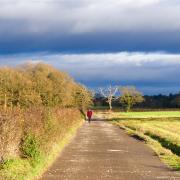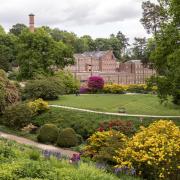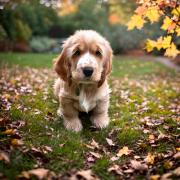Brian Anderson has been to some of the world’s most remote wildernesses to take his stunning wildlife photographs, but not all of them had their beginnings in such exotic locations.

Since he turned his back on architecture to concentrate full-time on his passion for pictures, Brian has visited both polar regions, isolated parts of South America and the wildlife rich Galapagos Islands. But among his finest pictures is one of a mandrill which was taken rather closer to home.
‘I’m often asked how I managed to get so close to it,’ said Fife-born Brian, who now lives in Bebington. ‘The answer is that it was taken at Chester Zoo.
‘It proves that you don’t have to go to far-flung exotic wildernesses to take brilliant pictures and that we all have the potential to take great pictures.’
The father-of-two developed his love of photography while working as an architect and gradually found his hobby was starting to take up more of his time. He was invited to teach photography at Burton Manor on the Wirral and began visiting schools to talk about his travels and his pictures.
‘Pictures can be a huge part of education,’ he said. ‘I remember when other people came into my school when I was young and it was great – I particularly remember a poet who came in and read some of his work – and if one child can be inspired by what I have seen and done, that’s great.
‘These holidays can be unbelievably expensive and very few people have the chance to experience it for themselves so I know how lucky I am to be there. Quite a few of the trips I have been on have been trips where I have been working, giving talks and workshops and helping people with their photography. I am earning a fraction of what I used to, but I am getting a hundred times more enjoyment out of life. It’s a joy.’
And Brian, who has trips planned later this year to America and the Galapagos Islands, added: ‘I have always been into travelling to wildernesses, places like Peru and Antarctica and on one trip I asked if they wanted a ship’s photographer. I thought nothing of it for a while, then I got a call inviting me on a trip to the North Pole.
On a trip to the Galapagos Islands I got chatting to people and I’m hoping we’ll be running some photographic tours. It gives me the chance to collect some fantastic pictures and to help those who are lucky enough to be there to take better pictures.
‘A lot of it is about being in the right place at the right time. There are some technical things you need to know – you need your picture to be in focus for one thing – but I don’t think you have to be a technical wizard. I think that 90 per cent of a picture should be in the camera, not created on a computer – images that are created digitally aren’t true photography for me. With most of my shots what you see is what I could see when I pressed the button.’
www.andersonimages.co.uk
Make your pictures click with these tips from Wirral-based photographer Brian Anderson
Think about your position when you take the picture. Make sure your subject – whether it’s a penguin or a person – isn’t going to have a signpost or street light coming out of their head.
Try to get some life in your wildlife pictures. Capture the animal in motion or doing something and if you are somewhere extremely cold be sure to keep your camera batteries warm.
Digital cameras allow us to take a lot of shots, so do. Experiment, but be sure to download your pictures regularly. Keeping vast numbers of pictures on your camera card is risky and you don’t want to lose the pictures you spent hours waiting for.



























